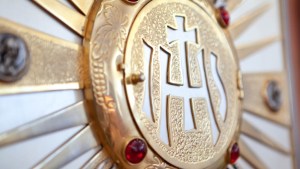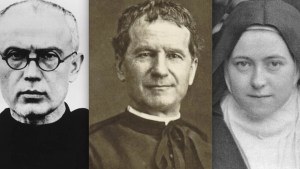The Word of God is one of the normal, ordinary, and effective means by which the Holy Spirit wishes to teach us to pray.
This Aleteia Series is looking at the signs from John’s Gospel as concrete lessons in prayer, taught by the Holy Spirit Himself.
See the series here:

Read more:
What is Jesus doing in the tabernacle? The Bible’s answer

Read more:
If the Holy Spirit is your teacher, here is his textbook

Read more:
What memory has to do with learning how to pray

Read more:
Have we been putting this off for 38 years?

Read more:
Go ahead and pray badly
The sixth sign (John 9:1-7): Prayer should end with action items
The sixth sign is seemingly the fruit of a theological question. On their way out of the Temple area, Jesus and his disciples notice a man born blind. The disciples take the opportunity to ask the Lord whether the blindness was a punishment for the man’s own sin or that of his parents, but Christ points to a different cause: “It is so that the works of God might be made visible through him.”
As always, the words of Christ can apply to us as well: God permits some of our difficulties precisely so that we can bring them to him in prayer, allowing his works to be “made visible” in our lives as he heals and helps us.
Christ then further explains these “works of God” as a sort of imperative, a necessity of God’s providential plan: “We have to do the works of the one who sent me while it is day. Night is coming when no one can work. While I am in the world, I am the light of the world.”
The comment can seem cryptic until one recalls the wider context: The miracle is immediately preceded by Christ nearly being stoned in the Temple area for his proclamation of divinity (“before Abraham came to be, I AM”). Worldly wisdom would say that Christ should have let the heat die down at this point. He and his disciples should have just slipped quietly back to some safe spot.
But the light of the world must shine; it is always Christ’s deep desire to bear good fruit for the Father. And so Christ ignores the danger, and sets about healing the man. Jesus spits on the ground, makes clay with the saliva, smears the clay on the blind man’s eyes, and says to him, “Go wash in the Pool of Siloam.” The blind man does as he is told and returns able to see.
Many fathers and doctors of the Church have seen this sign as symbolic of baptism: washing with water brings the “light of Christ” into one’s life. There are also good connections to be made here to the use of sacramentals like sacred images, scapulars, holy water, etc. Since human beings are a union of spirit and matter, material things assist us to “see” or more deeply understand aspects of our faith.

Read more:
Why sacramentals aren’t Catholic superstition, unless you’re using them the wrong way
However, if we are considering the significance of this sign for our personal prayer, then I would instead draw attention to the decisive ending. Christ does not content himself with mere discussion with his disciples. Instead, Christ gives the blind man a command. The man obeys: He goes to the pool and washes. And then God acts: The man is healed of his blindness.
Such a decisive ending should be a model for our own prayer. While it is good to think of prayer as a loving conversation with God, that description of prayer also has its dangers. As St. Francis de Sales writes, meditation can actually be harmful without concrete resolutions flowing from it: “to meditate on virtues we do not practice sometimes makes us proud, considering ourselves to be in fact what we have only resolved to be.”
To guard against such self-deception, St. Francis recommends concluding prayer by formulating (with God’s help) some very practical resolutions. We should conclude prayer with specific plans of action.
St. Francis gives the example of praying for the virtue of gentleness. We should resolve not merely to “be more gentle” in some amorphous way, but instead to resolve to seize some particular opportunity we might have to meet one of our enemies and “greet him amicably.” We should even have a back-up plan in place for our resolution, should the circumstances we anticipate not fall into place: “At least I shall try to speak well of him and pray for him to God.”
If prayer can be thought of as a loving conversation with God, then perhaps we can also think of it as a “meeting” with God. As Pat Lencioni writes, a truly effective meeting is one in which no one leaves the room without being “unambiguously committed to a common course of action.”
It strikes me as a worthy goal for personal prayer as well. Prayer, like a good meeting, should end with action items. “Prayer changes things”—especially when we act on those inspirations God has given us during prayer.

Read more:
These 20 saints teach us the importance of prayer

